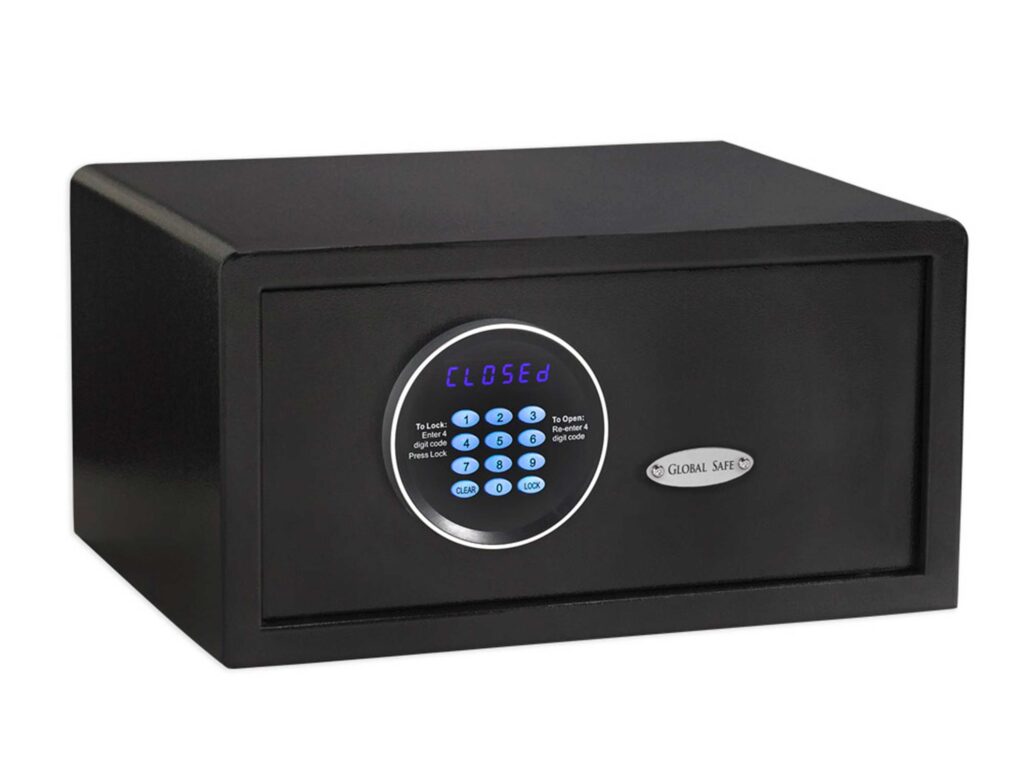In the labyrinth of hospitality, where guest satisfaction intertwines with security, hotel safes emerge as silent guardians, ensuring a sanctuary for guests’ valuables. The journey of hotel safes has evolved dramatically, embracing advanced features that not only safeguard belongings but also elevate the overall guest experience. Making informed decisions in the realm of “purchase safes” is paramount for hoteliers looking to balance security and convenience seamlessly to get purchase safes.
I. Introduction
Hotel safes, once relegated to the periphery of security infrastructure, have now assumed a pivotal role in ensuring guest trust and satisfaction. The evolution of these safes reflects a dynamic interplay between technology and the hospitality landscape, where modern features redefine the standards of safety. In this exploration of hotel safes, we delve into the intricacies that define their significance, emphasizing the need for a thoughtful approach in every “purchase safes” decision.
II. Advanced Locking Mechanisms
Biometric Technology for Enhanced Security
Hotel safes have transcended traditional lock-and-key mechanisms, embracing biometric technology as a beacon of heightened security. Fingerprint recognition stands at the forefront, providing guests with personalized access to their belongings. The integration of multi-modal biometrics adds an extra layer of authentication, ensuring a secure cocoon for valuables.
RFID and Electronic Locks
The marriage of radio-frequency identification (RFID) and electronic locks has streamlined access to hotel safes. RFID technology enables seamless unlocking, adding an element of convenience for guests. Electronic locks, with their precision and reliability, contribute to the overall sophistication of these security solutions.
Anti-Tampering Features
In the constant cat-and-mouse game of security, hotel safes stand resilient with anti-tampering features. Intelligent sensors detect any unauthorized attempts to breach the safe, triggering swift responses. Auto-locking mechanisms, a testament to proactive security, fortify the safe against potential threats.
III. Design and Placement Considerations
Integration with Interior Aesthetics
Modern hotel safes not only prioritize security but also seamlessly integrate with interior aesthetics. Sleek and unobtrusive designs ensure that safes complement the overall ambiance of hotel rooms. Customization options, allowing hotels to tailor safes to their unique décor, underscore the commitment to a harmonious blend.
Optimal Placement Strategies
Strategic placement of hotel safes is an art form in itself. Concealed installations strike a delicate balance, offering enhanced security without compromising guest privacy. Accessibility remains paramount, and hotels meticulously design rooms to ensure that safes are both secure and easily accessible for guests.
Durability and Resistance
Beyond aesthetics, hotel safes are crafted from impact-resistant materials, ensuring longevity in the face of wear and tear. Fire and water-resistant features add an extra layer of protection, safeguarding not just against theft but also unforeseen disasters.
IV. User-Friendly Interface
Intuitive Control Panels
Navigating the functionalities of a hotel safe should be a seamless experience for guests. Intuitive control panels simplify the operation, ensuring that guests can secure their valuables without unnecessary complications. Multilingual options cater to the global clientele, eliminating language barriers in the pursuit of security.
Remote Access and Monitoring
The incorporation of connectivity features elevates the role of hotel safes beyond mere storage. Remote access and monitoring provide hotel management with real-time insights into safe usage, enhancing overall security measures. This proactive approach fosters an environment of control and oversight.
Guest Education and Support
A pivotal aspect of user-friendliness lies in guest education and support. Clear instructions on safe usage empower guests to utilize the facility confidently. On-site support for any technical assistance ensures that, in the rare instance of issues, guests receive prompt resolution, maintaining the integrity of the guest experience.
V. Compliance and Industry Standards
Meeting Regulatory Requirements
In the intricate web of hotel operations, meeting regulatory requirements is non-negotiable. Hotel safes must adhere to stringent safety regulations, aligning with industry standards to ensure a secure environment for guests and compliance with legal obligations.
Data Security and Privacy
The sanctity of guest data is a paramount consideration in the digital age. Hotel safes, as repositories of personal belongings, must prioritize data security and privacy. Compliance with international privacy laws assures guests that their information is treated with the utmost confidentiality.
Regular Audits and Maintenance
Owning hotel safes entails a commitment to regular audits and maintenance. Periodic checks ensure optimal functionality, preventing potential downtime that could compromise guest satisfaction. Proactive maintenance measures underscore the commitment to providing a reliable and secure environment for guests.
In the delicate dance between security and hospitality, hotel safes emerge as choreographers, orchestrating an intricate balance. The evolution of these safes, marked by advanced features and a commitment to excellence, reflects an industry dedicated to ensuring guest peace of mind. As hoteliers navigate the landscape of security solutions, the judicious “purchase safes” decisions become not just a necessity but a strategic investment in guest trust and satisfaction.



